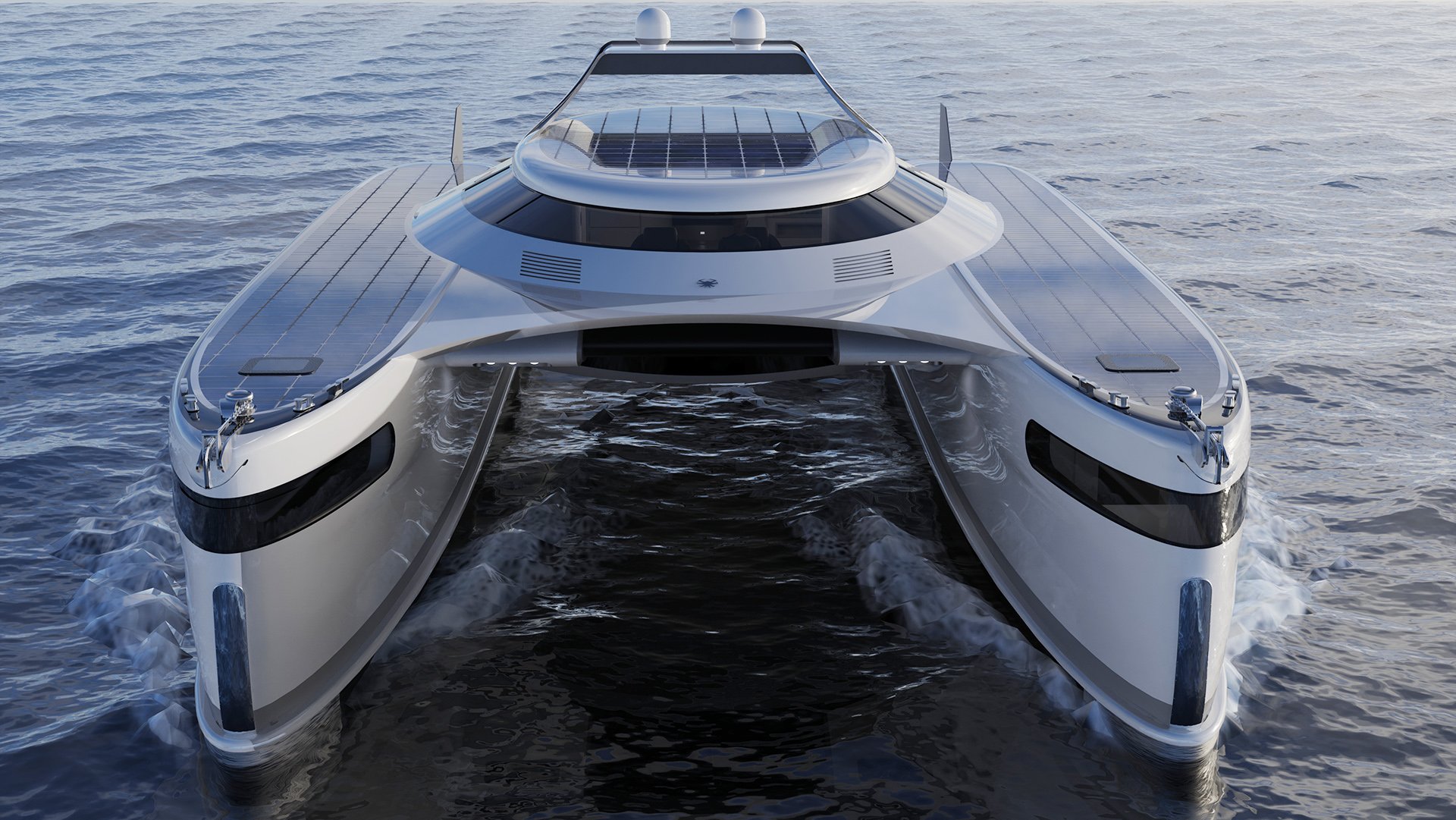Meet The Insane Amphibious Yacht That Crawls on Sand Like a Crab
A Tesla Cybertruck serves this $30 million boat’s terrain-conquering tender.
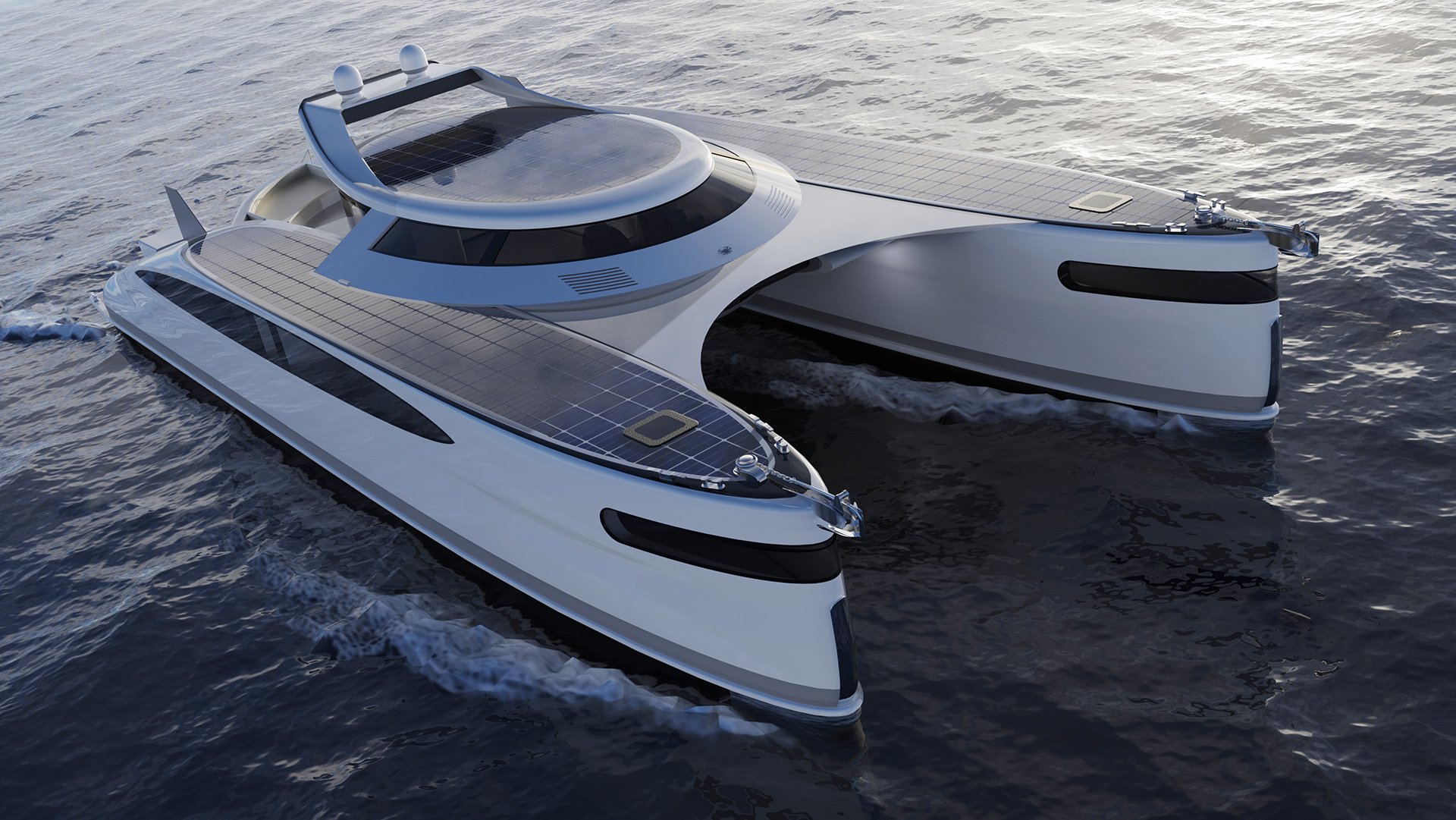
Lazzarini Design’s latest concept yacht might be its most ambitious project yet, and that should mean something to anyone who’s seen the Rome-based studio’s Vespa-like jet ski and rocket-shaped F33 Spazziale speed boat.
The “Pagurus”—Latin for “crab”—is an 82-foot amphibious superyacht with a carbon fiber shell inspired by the namesake crustacean. As Robb Report notes, the key to its land-traversing capability lies in its twin hulls, which house what are essentially four giant 21-foot-long steel screws. When beached, the helical screws—each powered by a 440-hp diesel engine—begin turning, biting into the ground and dragging the watercraft up the shore.
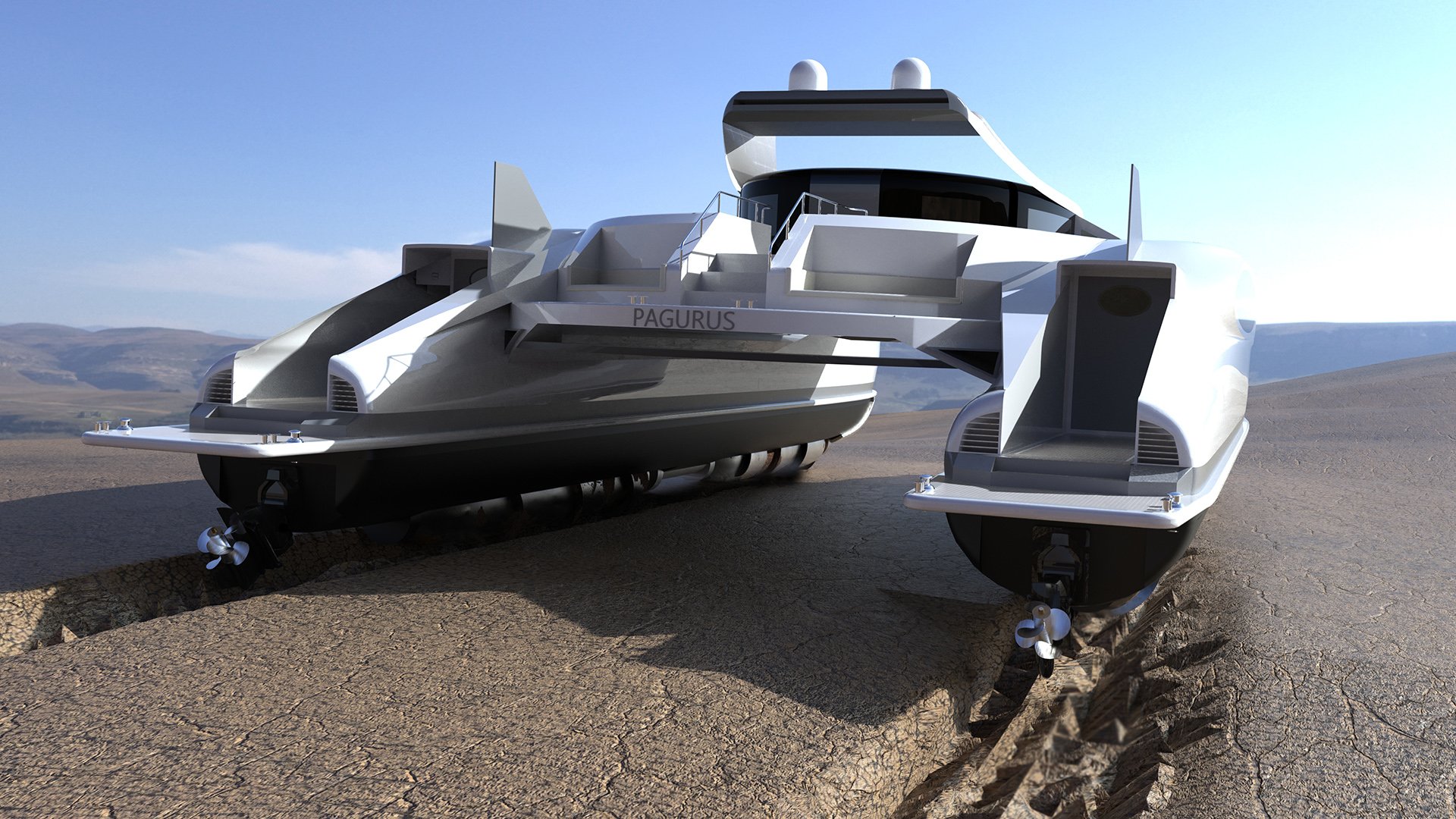
“It would be the ultimate explorer yacht, with the ability to take you on to land as well as sea,” Pierpaolo Lazzarini told Robb Report. He originally imagined the Pagurus as a military vehicle, but reworked the design with cabins for eight for the luxury yacht market.
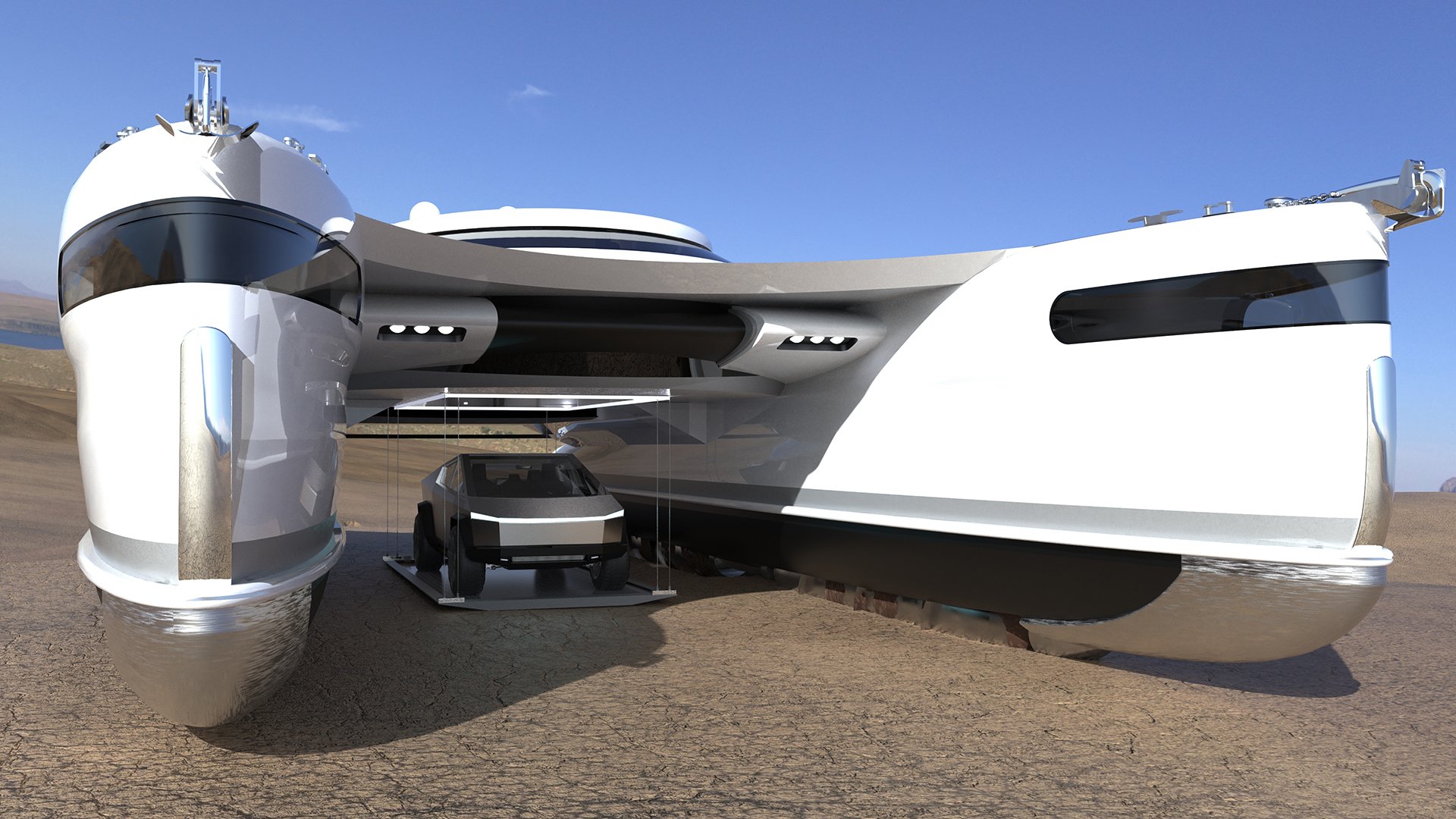
Admittedly, the amphibious design is only practical for pulling the Pagurus completely out of the water, not for traveling extended distances across land. But just as traditional yachts have smaller tender vehicles aboard, the Pagurus can store a 4×4, such as the pictured Tesla Cybertruck.
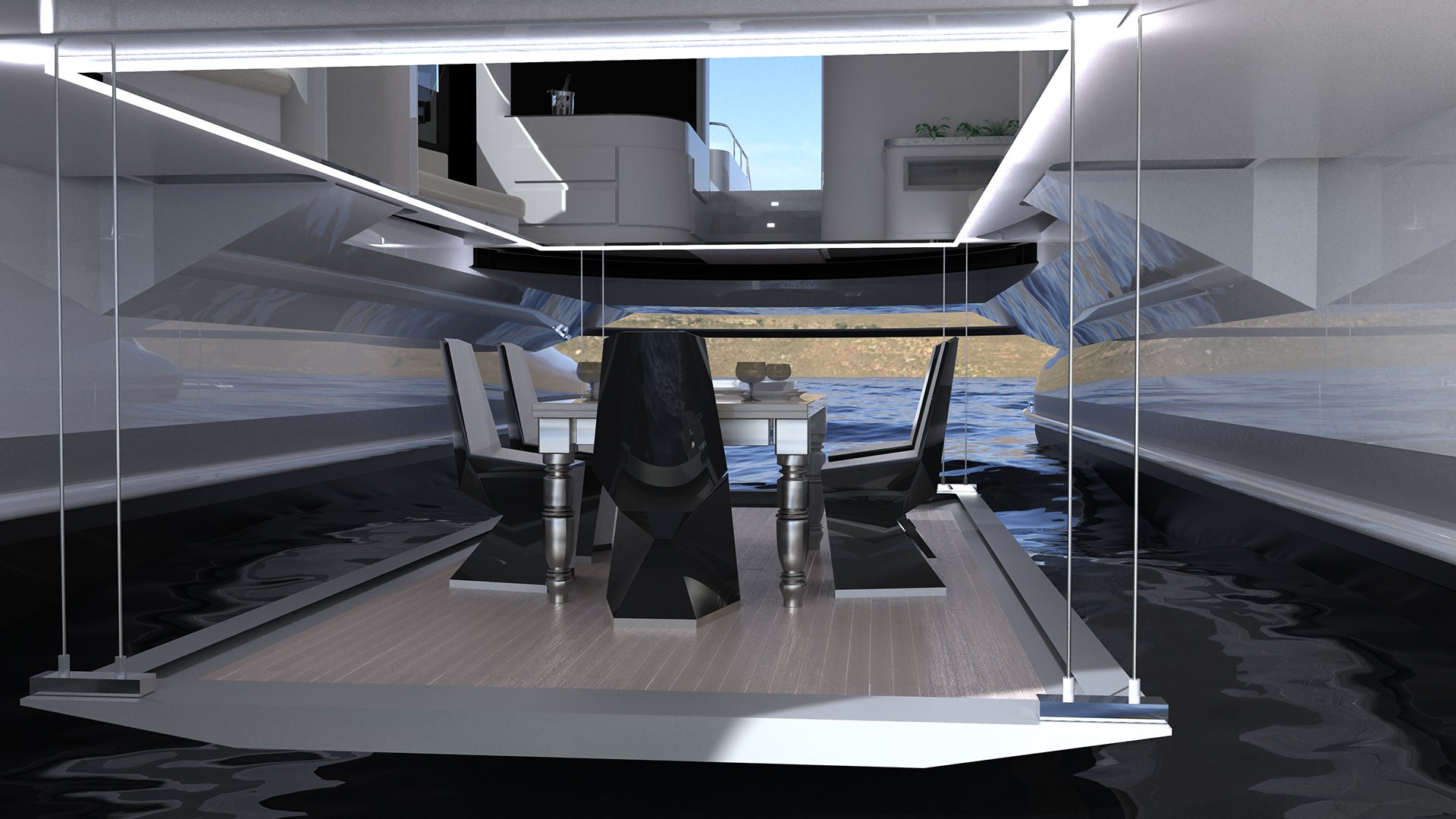
“We imagined that it could be stowed on a platform between the hulls and lowered down on winches to the ground. The same platform could be used to hold a couple of electric Tesla Cyberquad ATVs, or snowmobiles,” Lazzarini said. Any roadgoing vehicle could be supported, but an EV makes the most sense, as there are solar panel banks embedded in the hulls’ decks.
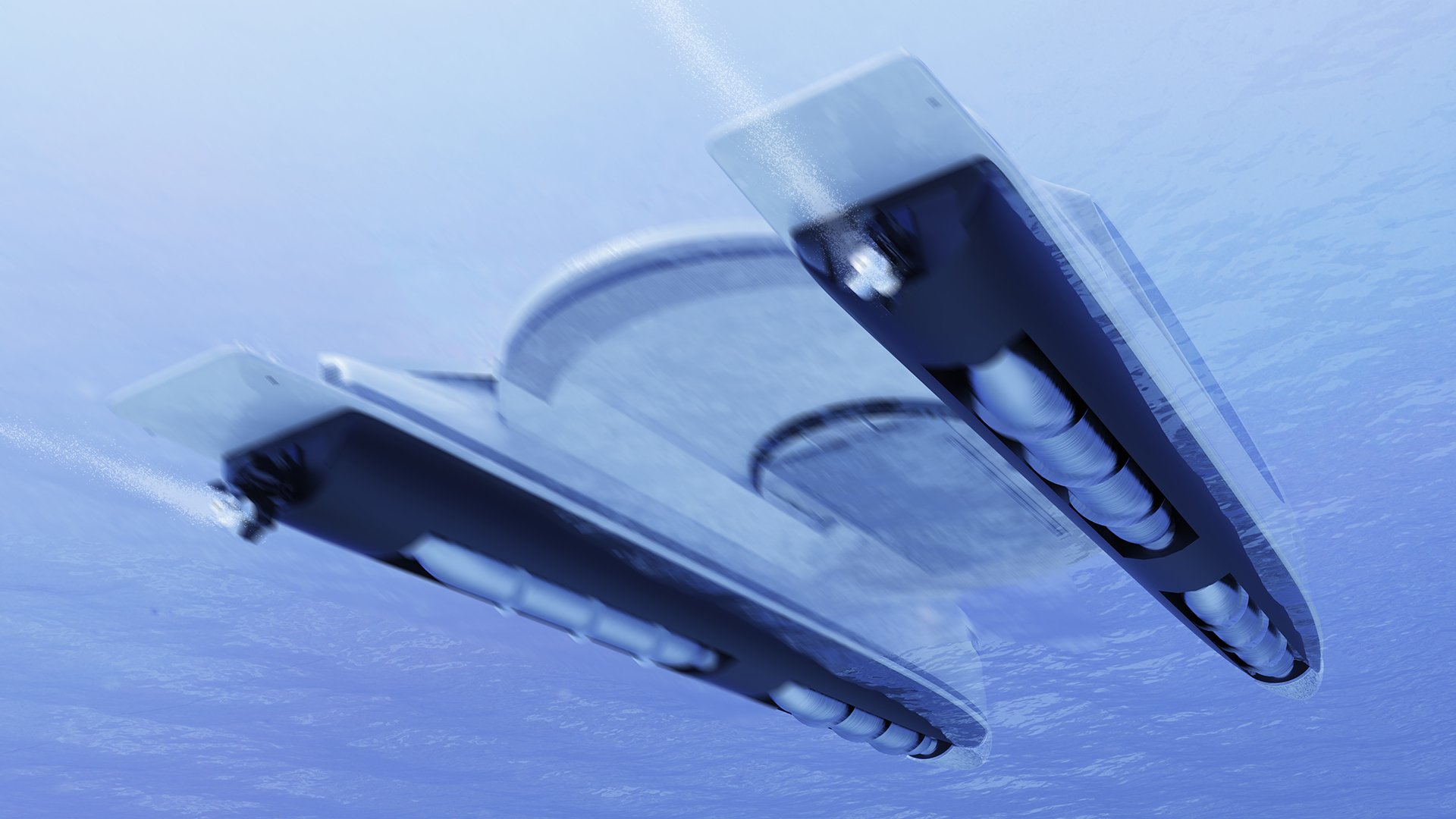
When seafaring, a pair of 900-horsepower Caterpillar diesels are capable of pushing the catamaran to a top speed of 25 knots, or about 29 mph. The screws can also be rotated underwater via electricity to cruise at 5 knots, or about 6 mph.
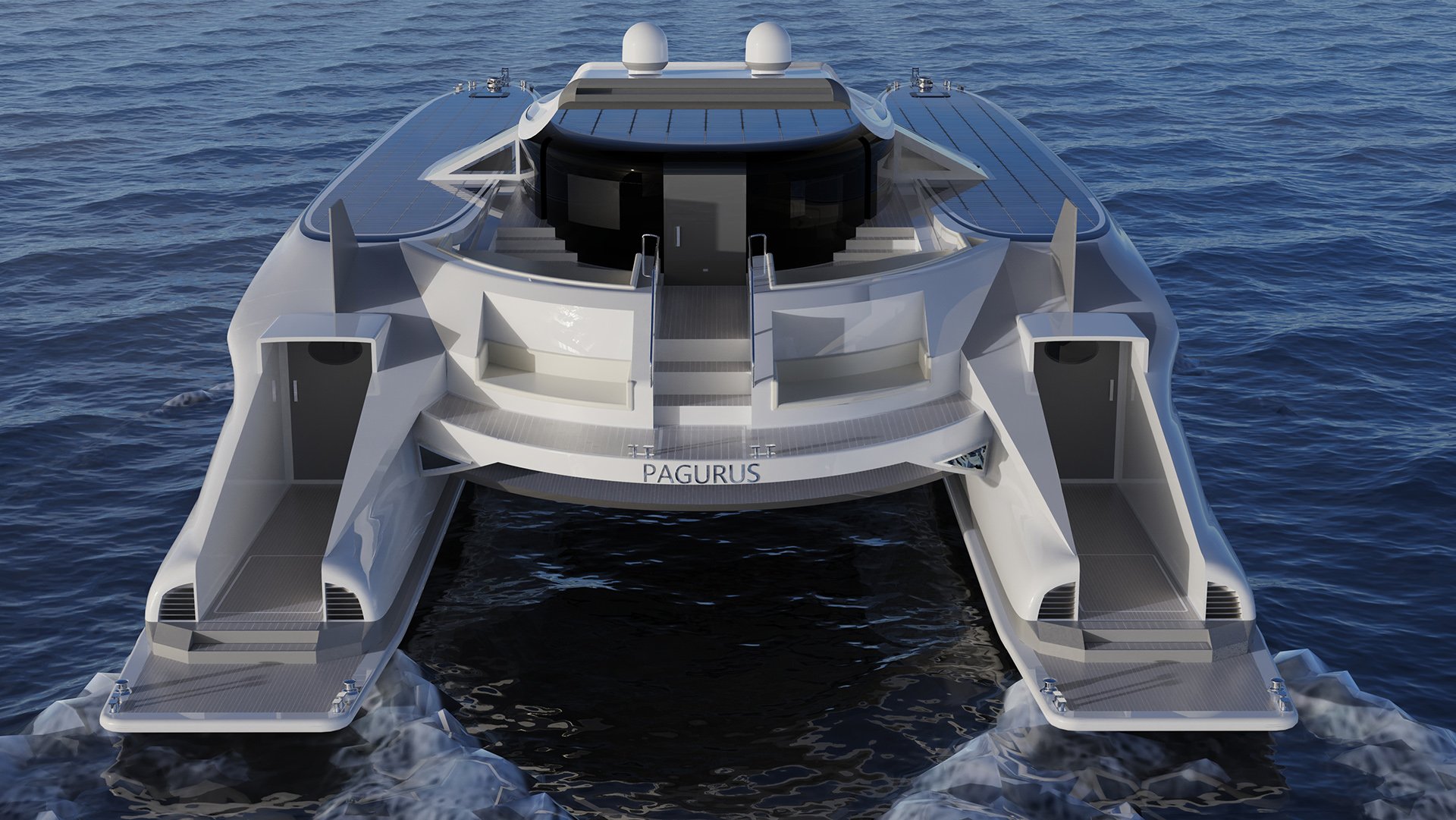
The Pagurus concept could be brought to fruition for $30 million. Another lighter-weight version without the screw-drive technology and a higher top speed of 32 knots (37 mph) would run for $8 million.
